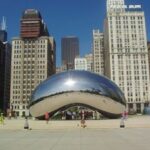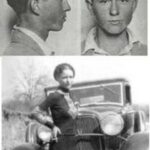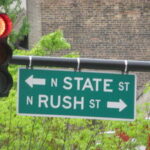Public Enemy had a great effect on the public opinion. It brought home violently the evils associated with prohibition and suggested the necessity of a nation-wide house cleaning. The end of Tom Powers is the end of every hoodlum. The Public Enemy” is not a man, nor is it a character – it is a problem that sooner or later we the public, must solve.
Public Enemy is the story of Tom Powers and Matt Doyle. The film opens to the year of 1909 in a small industrial town in Chicago. Tom and Matt are best friends and pre-teens destined for trouble. As they get older they advance from small time to big time crime. The ways of the street becomes their #1 priority. There connection to the underground mob leads them into a life of easy money, crime and murder. Tom is superior to Matt, whereas, Matt is the subordinate and follower of Tom. Before the story climax’s Matt is murdered by a rival underground mob. Tom goes after the murderers. Tom’s brother Mike is his exact opposite. Mike tries to encourage his brother for a better life. Tom is too stubborn to acknowledge Mike. In the end Mike’s battle to put his brother (Tom) on the right path is shattered. Tom’s way of life eventually catch up with him.
Bonnie and Clyde is the story about the couple Bonnie Parker and Clyde Barrow, who roamed the United States’ Southwest robbing banks during the Great Depression. Bonnie and Clyde craved adventure during a time of depression and economic stresses. They begin to fall in love with each other during the mist of their violent robberies. The easier the robberies become the more they want to rob. Bonnie and Clyde become well known criminals across cities as far west as New Mexico and as far north as Chicago. The hunt for them becomes a national concern. The couple is eventually ambushed and killed by the police. Bonnie and Clyde’s death is brutal, and it not until that moment that we learn they can be caught and hurt. The story is set up so well that we dread that they can be killed.
There are some differences and similarities in both of the films. Public Enemy was produced during the Great Depression, and Bonnie and Clyde was about the string of violent robberies during the Great Depression. The Great Depression was the worst and longest economic collapse in the history of the modern industrial world. The Great Depression lasted for about 11 years from 1929 until the early 1940’s. Many factors played a role in bringing about the depression; however, the main cause for the Great Depression was the combination of the greatly unequal distribution of wealth throughout the 1920’s, and the extensive stock market speculation that took place during the latter part of the same decade. The unbalanced distribution of wealth in the 20’s existed on many levels. Money was distributed disparately between the rich and the middle-class, between industry and agriculture within the United States, and between the United States and Europe. This imbalance of wealth created an unstable economy. The excessive speculation in the late 1920’s kept the stock market artificially high, but eventually led to large market crashes. These market crashes combined with the imbalance of wealth caused the American economy to capsize.
During this economic overturn Americans saw rapid declines in the production and sale of goods and a sudden, severe rise in unemployment. Business and banks closed their doors; people lost their jobs, homes and savings. To survive many people depended on charity. The Great Depression became worse in 1933 when more than 15 million Americans (one-quarter of the nation’s workforce) were unemployed. This triggered a worldwide deflation in a world economic situation. At this time Germany was suffering from hyperinflation of currency, and many of the Allied victors of WWI were having serious problems paying off huge war debts. The post-war effects on the world and the depression in the US continued throughout the late 1930’s. Finally, the depression ended when massive spending for WWII began.
The Great Depression was an important source of insight for the movie Public Enemy that was filmed in 1931. In 1931 the Committee for Unemployment Relief released a report on unemployment showing that 4 to 5 million Americans were out of work. On the contrary, Bonnie and Clyde was filmed in 1967 from an important source of historical insight from the Great Depression. Nevertheless, both films dealt with the consequences of the depression. Both films portrayed gender roles played by men and women and depicted social problems in the 1930’s. However, these similar issues were represented differently.
In Public Enemy the main character, Tom Powers, was portrayed as a typical “thug”. He was rough, particularly with guys who betray him; tough, especially with women who got on his nerves, and ready to succeed, and will sock, punch, slap or kills anybody who got in his way. Furthermore, he was a typical man for this time period, whereas, he treated women with a lower status. Women were seen a subordinate to the men in this movie. For example, Tom’s mother was a “traditional” woman. She was a homemaker and cooked, clean and prepared a happy home for her family. Tom was raised and a good home, yet he still was violent and abused women. He saw them as just “girls” as he stated in the beginning of the movie.
In Bonnie and Clyde, Clyde is almost the exact opposite of Tom Powers in Public Enemy. Clyde was tough and would hurt anyone who got in his way during the robberies. However, Clyde also had some sort of compassion and or soft spot for hurting people. He did not want to intentionally hurt anyone. He truly just wanted the money without any blood on his hands. Furthermore, Clyde unlike Tom respected women. Bonnie was Clyde’s equal or sometimes even more powerful them him. Whatever Bonnie demanded was taken into consideration immediately. An example of this is when they kidnap a couple in their own car. Bonnie gets fed up with the couple and declares to the Barrow gang to leave them. Moments later the couple is left in the middle of the night on a shallow road. Moreover, Bonnie is not in a typical female gender role. Perhaps, this is what attracted Clyde to her when he initially met her. Clyde’s way of life was exciting to Bonnie because he was able to accept her the way she was, and Bonnie was able to accept Clyde for his nontraditional personality.
The social problems depicted in both films were similar but was represented differently. The depression in which these films portrayed set up a distinct society. In Public Enemy the depression’s effect was more subliminal. On contrast, in Bonnie and Clyde the depression’s effect was prevalent. Bonnie and Clyde was apart of the depression, whereas, Tom was a result of it. Scenes in Bonnie and Clyde tried to convince us the audiences that like millions of Americans in the depression; Bonnie and Clyde were just trying to survive. Furthermore, a scene that portrays the social burden of the depression is when Clyde initially tries to teach Bonnie how to shot a gun. Bonnie accidentally shoots the house close by. The former owner of the house appears with his family. Clyde notices him and the man declares that he does not mind them shooting the house because he does not own it anymore. The Farmer Bank took over his house and evicted his family. This aspect of the movie portrays the hardship of the depression because during the Great depression many people lost their homes to the bank(s). Nevertheless, in Public Enemy Tom was a result of the depression because his family was poor and perhaps suffering from the depression. Tom made easy money to help support his mother.
When a society is in a depression – sustained downturn in the economy, it is in human nature to find and or adapt to the best way to survive. This is what both movies depicted, the social problems of the reality of the characters construal, this is, their construction of social reality. In Public Enemy Tom’s construction of social reality was to become a mobster and steal and kill to survive during his families’ hard times. Likewise, in Bonnie and Clyde their construal was to survive during the depression and strike back against capitalistic system and government officials. Perhaps, these characters choose the routes they did because during the depression nothing else seemed appropriate.
The civic enemy is not a man, nor is it a character – it is a problem that sooner or later we the public, must solve. Society today is filled with many characters like Tom and Bonnie and Clyde. These types of characters are problems to society because they live in the moment. Nevertheless, these films related to society at the time and relates to society today. They reflect the public’s mood, human nature and a variation in the social construal.
The Great Depression was a part of history that was filled with agony and distress among Americans. Imagine yourself being apart of society at that time. How would you escape the hardships of the depression? Furthermore, How would you interpret the Great Depression and survive? Hollywood and filmmaking had a huge impact of people’s mood during the depression and gave them the strength to carry on. Hollywood in the Great Depression: Public Enemy and Bonnie and Clyde depicted the hardships of the depression and portrayed ways in which these characters survived. However, sometimes the choices we make can cost us dearly. The moral of the films, and a message to students of history watching these films is prevalent in what J.D Rockefeller said, “These are days when many are discouraged… depressions have come and gone. Prosperity has always returned and will again.”
Bibliography
A History of The United States, Inventing America Volume 2. 2003. Pauline Maier. Norton & Company, Inc. New York, NY.
The Dust Bowl and The Depression. In American History. 2002. Debra McArthur. Enslow Publishers, Inc. Berkeley Heights, NJ.
Depression (Economics) – Wikipedia Encyclopedia. http://en.wikipedia.org/wiki/Economic_depression.
The Main Causes of the Great Depression http://www.gusmorino.com/pag3/greatdepression/index.html.





